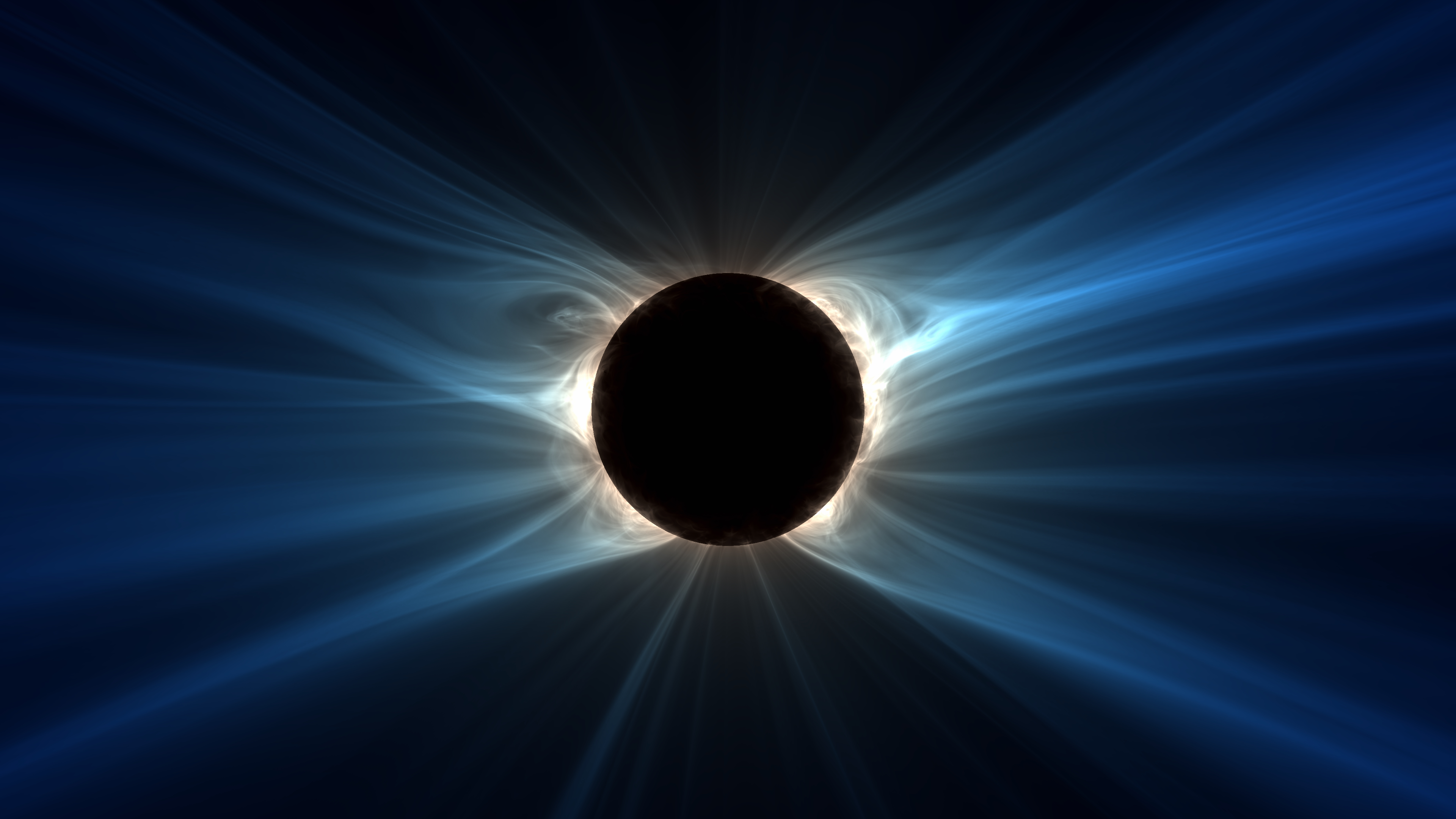By Kimberly Mann Bruch, SDSC Communications
A week before however, everyone had a chance to see what the eclipse might look like thanks to simulations generated on the recently launched Expanse supercomputer at the San Diego Supercomputer Center (SDSC) at UC San Diego.
Generated by solar physicists at San Diego-based Predictive Science Inc. (PSI), the prediction model was aimed at detailing the structure and appearance of the solar corona. In addition to showcasing the breathtaking solar eclipse, such models provide important insight to how the corona is heated and how supersonic solar wind is accelerated in interplanetary space.
“The sun’s magnetic activity had picked up quite a bit in the months leading up to this recent eclipse and the increased activity on the surface largely determines the shape of the solar corona,” said Cooper Downs, a research scientist at PSI. “Our prediction was pretty close this year, however, as always there are always a few discrepancies.”
“One great thing that eclipses provide is an uninterrupted view of coronal streamers and how they pinch off to become the solar wind,” he further explained.
The streamers mentioned by Downs, which are only seen during an eclipse, are wispy concentrations of plasma weaving in and out of the sun’s corona. Eventually becoming part of the solar wind, the streamers’ overall shapes and appearances are largely determined by free energy content as well as how and where heat is deposited in the corona.
“These models allow us to better understand additional fundamental science concepts such as the mass ejections of plasma that cause space weather as well as details of the sun’s corona,” said Jon Linker, PSI’s president and senior research scientist. “High-performance resources such as Expanse are crucial for us to develop solar corona and solar wind simulations and we utilized the large core count of compute nodes for post-processing and visualizations.”
Details regarding the December 14 solar eclipse are on the PSI website at www.predsci.com/eclipse2020. Information regarding a similar eclipse, which occurred on July 2, 2019, is available here.
This work is supported by NASA, the National Science Foundation (NSF), and Air Force Office of Scientific Research (AFOSR). Expanse computations are allocated via the NSF’s Extreme Science and Engineering Discovery Environment, or XSEDE (ACI-1548562). Additional supercomputing was supported by the Advanced Supercomputing Division at NASA’s Ames Research Center.
About SDSC
The San Diego Supercomputer Center (SDSC) is a leader and pioneer in high-performance and data-intensive computing, providing cyberinfrastructure resources, services, and expertise to the national research community, academia, and industry. Located on the UC San Diego campus, SDSC supports hundreds of multidisciplinary programs spanning a wide variety of domains, from astrophysics and earth sciences to disease research and drug discovery. In December 2020 SDSC’s newest National Science Foundation-funded supercomputer, Expanse, entered production. At over twice the performance of Comet, Expanse supports SDSC’s theme of ‘Computing without Boundaries’ with a data-centric architecture, public cloud integration, and state-of-the art GPUs for incorporating experimental facilities and edge computing.


